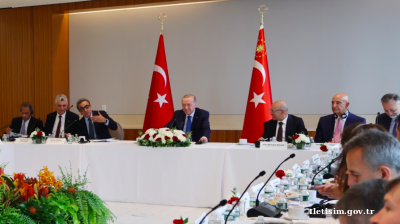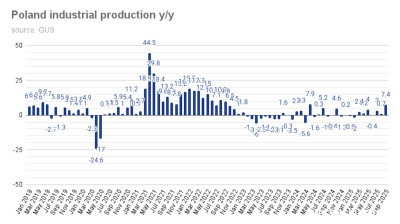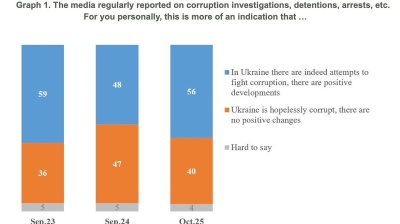The trade war between the US and China, the currency meltdown in Turkey, the growing economic war between the west and Russia and an anticipated global economic slowdown in 2019 all helped drive portfolio outflows from the leading emerging markets (EMs) in 2018. The prospects for 2019 are, if anything, worse.
December was a slow month for net non-resident portfolio inflows to emerging markets, the Institute of International Finance (IIF) said in a note.
“After the very strong figures in November, concerns surrounding global growth hindered the positive momentum of portfolio inflows. We estimate that EM securities attracted only $3.1bn of foreign capital in December,” IIF writes.
On the debt side, December saw only $0.2bn in inflows, after a strong reading of $22bn in November. The weaker level of debt flows was mainly explained by outflows from EM Europe and Africa & Middle East ($-0.3bn for each region) and disappointing inflows to EM Asia ($0.7bn) and Latam ($0.1bn), IIF reports.
Those poor bond market results are reflected in the bne IntelliNews monthly CEE bond market wrap released this week that shows 2018 was a terrible year for bond issues out of Eastern Europe and only a mediocre one for bond issues in Central and Eastern Europe (CEE). In the second half of 2018, apart from November, there were almost no international bond issues from Russia at all.
The same is true in equities where there was a net outflow of $2.9bn in December, according to to the IIF headline portfolio flow tracker.
Stepping back and looking at the broad measure of capital flows – that include bank credits and foreign direct investment (FDI) – the IIF reports there was a net outflow of $23mn from EMs in November, which was a moderation on the $28bn of outflows in October.
“The main driver for the contraction is still China (-$32bn), where worries of further trade tensions and fears of a global slowdown may have increased net outflows,” IIF concludes. “Otherwise, our net capital flows tracker indicates that EM ex. China net flows rebounded ($9.2bn). Flows to Turkey turned negative (-$1bn).”

2018: The year of volatility
Looking at the results of the whole year, the preliminary results show that the non-resident portfolio inflows into EMs were positive, registering a total inflow of $195.5bn, but that is almost half the inflows in 2017 and down by a total of $173bn reports the IIF.
However, last year’s result was still better than in 2016 when $149bn flowed into EMs and also 2015 with $81bn. This result was also reflected in the bne IntelliNews bond market wrap, which highlights that 2017 was a vintage year for bond issues from the New Europe region, but with US Federal Reserve bank tightening under way and fraught geopolitics the outlook for 2019 is similar to 2018 at this point.
As the chart shows, the breakdown between portfolio equity and debt flows in 2018 was $28bn and $167bn, respectively.
Last year was a volatile one, marred by one-off shocks in Turkey and Argentina in particular.
“After an EM sell-off in the summer, markets turned more positive on EMs mainly because currency valuations had in some cases become excessively cheap. Recently, fears of a global growth slowdown partly offset the positive effects of a more dovish Fed and the 'truce' in the US-China trade conflict. All in all, 2018 showed the highest volatility for non-resident portfolio flows in eight years,” the IIF observes.
China – the most important country in terms of participation in capital flows – also experienced significant volatility during 2018. The first half of 2018 showed China equity flows at $33.3bn, whereas the second half saw a reduction to $26bn.

|
EM Net Capital Flows* $bn |
||||||||||
|
CHN |
CZE |
EGP |
HUN |
IND |
POL |
RUS |
SAR |
TUR |
UKR |
|
|
2018 Q1 |
60.4 |
-2.9 |
7.3 |
-3.6 |
26.3 |
2.4 |
-10.7 |
-12.2 |
15.6 |
-0.2 |
|
2018Q2 |
20.6 |
0.4 |
2.3 |
-0.8 |
4.8 |
-9.7 |
-7.5 |
-6 |
7.9 |
0.1 |
|
2018 Q3 |
-24.5 |
1.5 |
2.7 |
-1.4 |
15.7 |
5 |
-21.5 |
-49.9 |
-10.5 |
1.4 |
|
Sept-18 |
-20 |
0 |
0.1 |
-1.2 |
3.8 |
0.7 |
-10.6 |
-21.1 |
-5.3 |
0.7 |
|
Oct-18 |
-24.5 |
0.2 |
2 |
-0.7 |
0.3 |
-2.6 |
-3 |
-8 |
-0.4 |
1 |
|
Nov-18 |
-32.4 |
0.1 |
0.9 |
-0.4 |
7.3 |
2.1 |
-2 |
-9.5 |
-1 |
1.3 |
|
Jan-Nov 2018 |
-0.4 |
-0.7 |
15.2 |
-6.9 |
54.5 |
-2.7 |
-44.8 |
-85.6 |
11.6 |
3.5 |
|
Jan-Nov -2017 |
-64.5 |
45.3 |
21.4 |
-9.9 |
65.8 |
-12.4 |
3.8 |
-51.8 |
40 |
4.5 |
|
2017 |
-73.3 |
45.3 |
22.4 |
-9.3 |
76.5 |
-14.9 |
-10.6 |
-53.9 |
39.1 |
5.1 |
|
IIF forecast 2018 |
160 |
-5 |
18 |
-4 |
56 |
-1 |
-54 |
-47 |
||
|
source: IIF |
||||||||||
|
* Net capital flows = financial account balance excluding reserves |
Data

Chobani yoghurt king Hamdi Ulukaya becomes richest Turk
Knocks Murat Ulker into second place in Forbes ranking as his company's valuation leaps to $20bn.

Poland’s industrial production jumps 7.4% y/y in September
September saw an unexpectedly sharp increase in industrial production after the surprise gain of 0.7% y/y in August.
Ukrainian M&A market grows 22% despite war, driven by local investors
Two large acquisitions by agriculture holding MHP and mobile operator Kyivstar accounted for more than half of the total deal value.

Ukraine’s credibility crisis: corruption perception still haunts economic recovery
Despite an active reform narrative and growing international engagement, corruption remains the biggest drag on Ukraine’s economic credibility, according to a survey by the Kyiv International Institute of Sociology.




